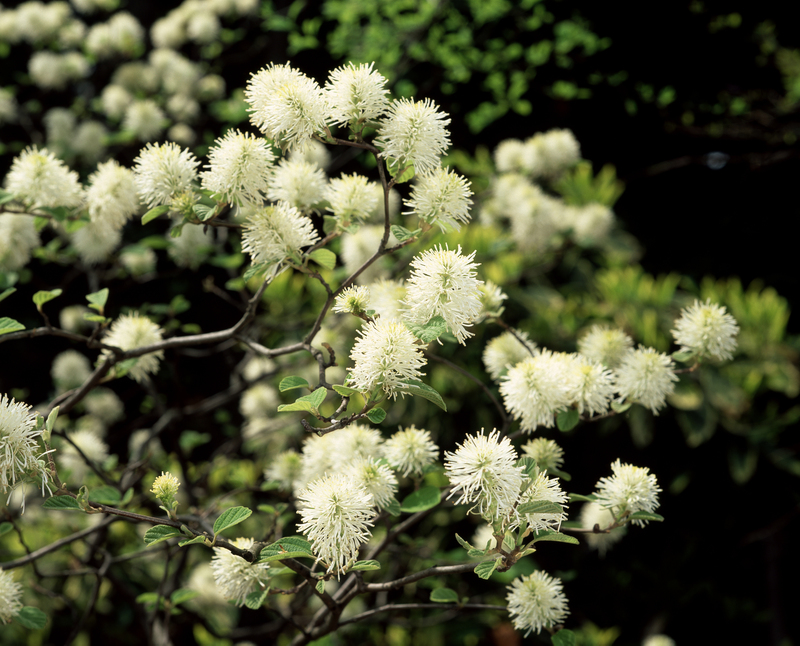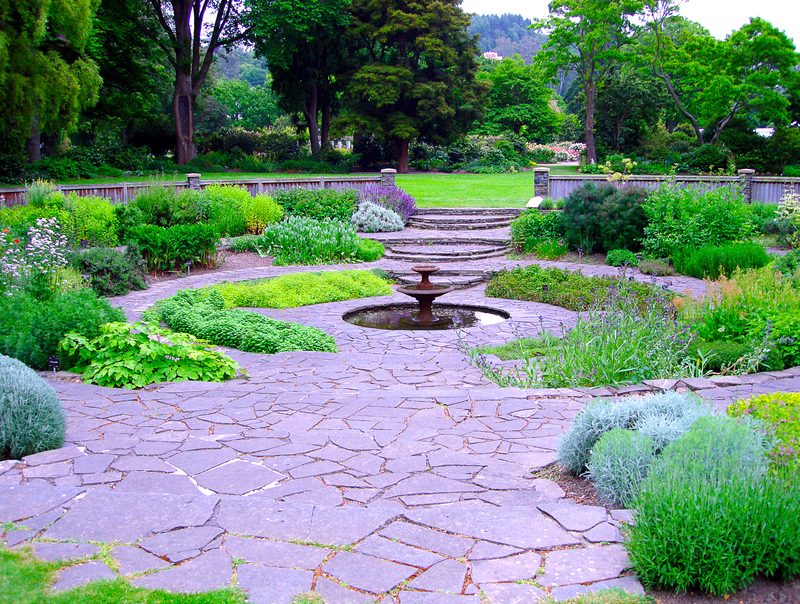3 Essential Tips for Mastering Weed Control
Posted on 07/09/2025
3 Essential Tips for Mastering Weed Control
Effective weed management is the foundation of a healthy and attractive garden or lawn. Whether you're a passionate gardener, a new homeowner, or a commercial landscaper, understanding how to control weeds can save you time, money, and frustration. In this comprehensive guide, discover three essential tips for mastering weed control--from proactive prevention to the best removal methods and sustainable, long-term strategies.
Why Weed Control Matters for Your Lawn and Garden
Weeds are more than nuisance plants; they compete with your desired crops and turf for sunlight, water, and nutrients. Left unchecked, they can quickly overrun lawns and garden beds, diminishing curb appeal and possibly hosting pests and diseases. Effective weed control is crucial for maintaining optimal plant health, ecosystem balance, and overall landscape beauty.
- Weeds can choke out vegetables, flowers, and grass, resulting in sparse, unsightly patches.
- Uncontrolled weeds can harbor insects and diseases that threaten your other plants.
- Some weed species are invasive and can spread rapidly, disrupting native ecosystems.
By mastering weed control techniques, you gain the confidence to keep your yard, garden, or property thriving all season long.

Tip 1: Prevention is the Best Weed Control Strategy
Start with Healthy Soil & Dense Planting
The first and most vital step in effective weed suppression is to prevent them from taking root in the first place. Weeds thrive in disturbed, bare, or poor-quality soils. So, by focusing on soil health and strategic planting, you make your garden less hospitable to weeds.
- Test and amend your soil: Regular soil testing tells you if your lawn or garden needs nutrients or organic matter. Healthy, well-fed plants outcompete weeds naturally.
- Increase plant density: Use tight row spacing for vegetables, overseed bare lawn patches, and fill empty beds with ground covers to shade out weed seedlings.
- Apply quality mulch: Organic mulches like wood chips, straw, or bark not only conserve moisture but also block sunlight from reaching weed seeds.
Mulching: The Gardener's Secret Weapon
Mulch is your best friend for natural weed control. A 2-4 inch layer of mulch around shrubs, trees, or in garden beds can suppress up to 90% of weed growth by blocking light and creating a more consistent soil temperature. Mulch breaks down over time, adding organic matter to the soil--a bonus for plant health!
- Refresh mulch annually to maintain coverage.
- Keep mulch a few inches away from plant stems to prevent rot.
- For lawns, leave grass clippings as a light mulch after mowing.
Landscape Fabric: Permanent Weed Barrier
In high-maintenance or perennial beds, landscape fabric is an excellent tool for long-term weed prevention. When placed below mulch, it forms a physical barrier that blocks weeds while letting water and air through. However, be sure to choose a permeable commercial-grade fabric that won't suffocate roots.
Tip 2: Smart Weed Removal Techniques
Hand-Pulling: Know When and How
Sometimes the simplest method is the most effective. For small infestations or young weeds, hand-pulling ensures you remove the weed's root and prevent regrowth. The best time to pull weeds is after rain, when soil is moist and roots come out more easily.
- Use a weeding tool or dandelion fork for deep-rooted species.
- Wear gloves to protect your hands from thorns or irritants.
- Dispose of weeds before they set seed to break the cycle.
Mechanical & Thermal Weed Control
Mechanized options like string trimmers, hoes, and tillers save time in larger areas. For paved or gravel surfaces, flame weeders and steamers offer chemical-free weed eradication by cooking weed tissue. Use caution around desirable plants, and comply with local regulations for flame tools.
Using Herbicides Responsibly
Chemical weed killers--whether organic or synthetic--can be effective for tough or aggressive weeds. When using any herbicide:
- Read and follow label instructions carefully.
- Apply on calm, dry days to minimize drift to other plants.
- Spot-treat only problem areas.
- Use pre-emergent herbicides early in the season to prevent weed seeds from sprouting under lawns and flower beds.
Remember, weed killers can be selective (targeting specific weed types) or non-selective (killing everything). Apply them sparingly and as a last resort, especially near edible crops, children, or pets.
Tip 3: Sustainable, Long-Term Weed Management
Plan for Weed Pressure Throughout the Season
The best weed control is a year-round, integrated process. Here are proven approaches to stay ahead of weeds.
- Rotate crops in vegetable plots: Rotating plant families from season to season disrupts weeds and reduces pest build-up.
- Mow regularly and at the right height: Lawn grasses thrive when kept 2-3 inches tall, which shades soil and reduces weed seed germination.
- Promptly reseed bare patches: Healthy lawns crowd out most weed species; fill in bare areas before weeds take advantage.
Cultural Practices for Weed-Resilient Lawns and Gardens
Healthy, dense lawns and vigorous garden beds are naturally resistant to most weed invasions. Here's how to cultivate a landscape that tips the balance in your favor:
- Water deeply but infrequently: Deep watering promotes strong root systems in desirable plants, while shallow, frequent watering favors weeds.
- Fertilize appropriately: Overfertilizing can feed weeds as well as crops. Target feedings at the right times and rates for your plants.
- Keep edges tidy: Weeds often creep in from neglected edges; use edging materials or routine trimming to keep borders clean.
Monitor and Respond Quickly
The most successful weed management plans include regular monitoring. Walk your property weekly and look for trouble spots:
- Young weeds are much easier to control than mature, seed-producing plants.
- Identify invasive or noxious species early and act decisively.
- Record what works in your yard, and adjust as needed each season.

FAQs: Mastering Weed Control in Lawns and Gardens
What is the most effective way to prevent weeds?
The most effective weed control is a combination of healthy soil, dense planting, and consistent mulching. Block sunlight from reaching weed seeds and maintain vigorous, competitive plants.
Are natural or homemade weed killers safe and effective?
Some homemade solutions--like vinegar, boiling water, or salt--can kill weeds, but they may also harm soil or nearby plants. Always test small areas first and avoid overuse.
How can I control weeds without chemicals?
Mechanical removal, mulching, proper lawn care, and strategic watering are all effective, eco-friendly ways to manage weeds without synthetic herbicides.
When is the best time to address weeds?
Early intervention is key. Attack weeds in the seedling stage or before they flower and set seed for easier removal and less future work.
Conclusion: Master Your Weed Control for a Beautiful, Healthy Landscape
Mastering weed control isn't about fighting a never-ending battle--it's about taking control with proactive, smart strategies! By focusing on prevention, expert removal techniques, and sustainable, long-term management, you can reduce the time and effort spent on weeds each season.
In summary, follow these three essential weed control tips:
- Prevent weeds: Build healthy soil, dense plantings, and use mulch to block unwanted growth.
- Remove weeds smartly: Combine hand-pulling, mechanical tools, and responsible herbicide use for best results.
- Think sustainably: Foster resilient landscapes through crop rotation, deep watering, mowing, and consistent monitoring.
With patience, observation, and the right approach, you'll enjoy weed-free lawns and gardens that thrive year after year. Start implementing these tried-and-true weed management strategies today for a landscape you can love and be proud of!

